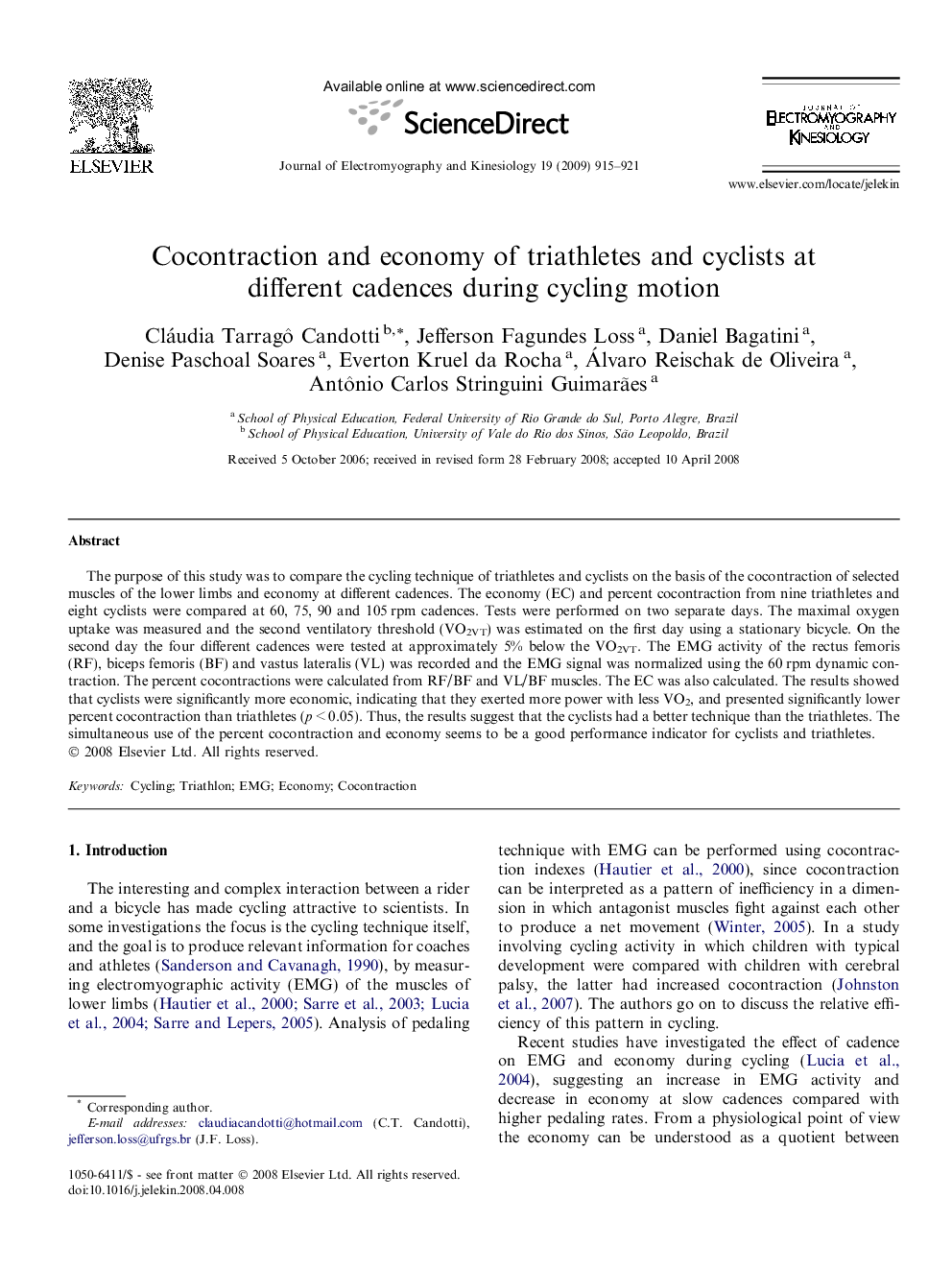| Article ID | Journal | Published Year | Pages | File Type |
|---|---|---|---|---|
| 4065229 | Journal of Electromyography and Kinesiology | 2009 | 7 Pages |
The purpose of this study was to compare the cycling technique of triathletes and cyclists on the basis of the cocontraction of selected muscles of the lower limbs and economy at different cadences. The economy (EC) and percent cocontraction from nine triathletes and eight cyclists were compared at 60, 75, 90 and 105 rpm cadences. Tests were performed on two separate days. The maximal oxygen uptake was measured and the second ventilatory threshold (VO2VT) was estimated on the first day using a stationary bicycle. On the second day the four different cadences were tested at approximately 5% below the VO2VT. The EMG activity of the rectus femoris (RF), biceps femoris (BF) and vastus lateralis (VL) was recorded and the EMG signal was normalized using the 60 rpm dynamic contraction. The percent cocontractions were calculated from RF/BF and VL/BF muscles. The EC was also calculated. The results showed that cyclists were significantly more economic, indicating that they exerted more power with less VO2, and presented significantly lower percent cocontraction than triathletes (p < 0.05). Thus, the results suggest that the cyclists had a better technique than the triathletes. The simultaneous use of the percent cocontraction and economy seems to be a good performance indicator for cyclists and triathletes.
